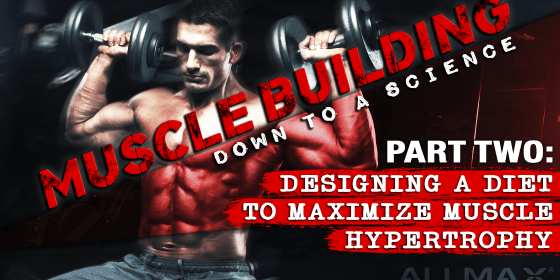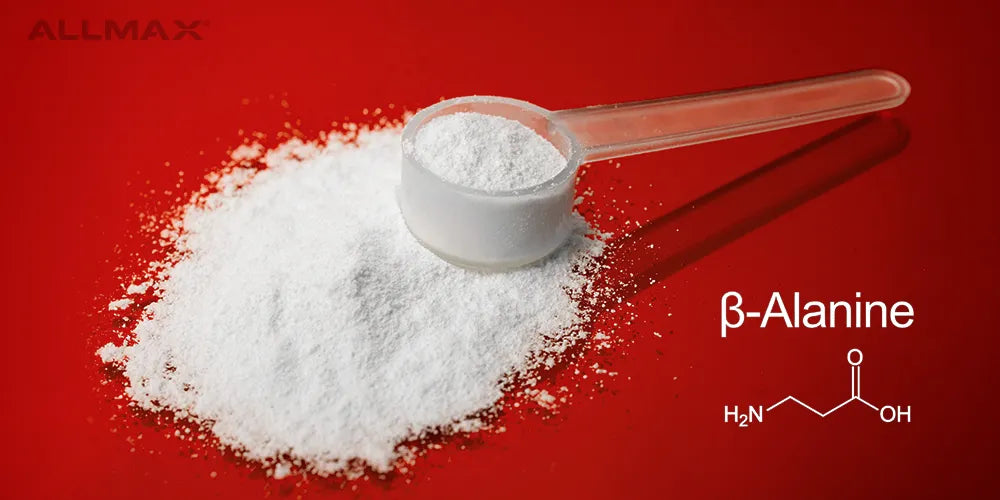…ENERGY BALANCE ALSO APPLIES TO GAINING MUSCLE.


Don’t forget that energy balance also applies to gaining muscle. To lose weight you must be in an energy deficit and therefore the opposite it also true: to gain weight, you must be in an energy surplus. Added muscle, is added mass – and adding mass requires energy. Most often, just eating more in and of itself will lead to significant gains in muscle mass (1).

Yes, in order to gain muscle, it has been suggested that daily eating habits should result in a energy surplus of 300-500 calories (2). This is a good starting point; however, you should realize that people come in all shapes and sizes. The magnitude of increased muscle mass elicited by a 500 calorie surplus for a 150lb recreational bodybuilder that trains three times a week will be very different than that of a 200lb bodybuilder that trains 7 days a week.

The first step in designing an effective diet plan is to calculate your personal daily caloric requirements to maintain your current weight. These are you maintenance calories. The next step is to eat in excess of this amount. There is one caveat though. More is not always better! Sure, eating in excess of 1000 calories/day results in enhanced muscle mass, but that’s not without the addition of added fat mass (1).
WHEN IT COMES TO CALORIES, MORE IS NOT ALWAYS BETTER!
The question remains, is there a cap on how many calories one may consume until muscle growth reaches a ceiling and the spillover is turned into fat? Fortunately there is one piece of evidence that would suggest this ceiling exists. In an as of yet, unpublished study, two groups of resistance trained men over consumed either 800 or 2000 calories/day. Each group trained similarly and enhanced muscle mass similarly. However there was a difference in fat mass considering the 2000 calories/day group gained 2lbs of fat and the 800 calories/day group lost 2lbs of fat (3). This study builds a case for the reverse diet approach to building mass.

That is, to keep fat accretion in check, one should systematically increase their calories by a small margin every time there is a plateau in weight/muscle gain. Now that you have a personalized energy surplus, it is necessary to tweak each macronutrient for optimal muscle growth. The first step is to include adequate protein. It has been shown that increased energy intake without sufficient protein results in loss of lean body mass with increased weight, whereas sufficient protein intake elicits increases in lean body mass (4, 5). Adequate protein is also required for enhanced muscle protein synthesis (MPS) which, if greater than muscle protein breakdown, results in muscle growth.
Chronic exercise as well as adequate protein intake are the stimuli necessary for muscle hypertrophy (6). This is optimized by utilizing the training techniques in ‘Muscle Building Down to a Science Part 1’ and ensuring you are ingesting enough daily calories to meet your goals. Increased muscle mass occurs when net protein balance is positive, and thus protein intake is key (7, 8). As such, it is recommended that 1.4-2.0g/kg of bodyweight be ingested for exercising individuals (9). Interestingly, the timing of protein consumption per se may not be so important. When enough protein is consumed throughout the day, it appears that the timing of consumption (i.e. anabolic window) is less than relevant for hypertrophy (10). However, spreading protein consumption into optimal doses throughout the day may be beneficial for hypertrophy (11). It has been observed that periodically consuming protein (20g whey) in frequent intervals (every 3h) during recovery is advantageous compared to larger doses (40g whey) less frequently (every 6h) (11). This is likely due to the “muscle full effect” wherein MPS peaks given an optimal dose of protein and does not further increase even with sustained amino acid intake (12, 13).
…CARBOHYDRATES ARE AN ESSENTIAL COMPONENT OF TRAINING FOR MUSCLE GROWTH.
In contrast to protein, carbohydrates do not necessarily elicit any direct anabolic effect; however, the timing of these nutrients may be important for performance (8). For instance, carbohydrate consumption prior to training results in the increased capacity to conduct higher volume workouts (14). Considering what is known about the association between workout volume and hypertrophy, pre-workout carbohydrates are an essential component of training for muscle growth. Moreover, carbohydrate consumption immediately following a workout will lead to rapid rates of glycogen synthesis that slows if intake is delayed (8). Quickening the rate of glycogen synthesis means you’ll be prepared in time for the next bout of resistance training! Dietary fat seems to be the most mysterious of the three macronutrients. Although there appears to be some correlation between very low dietary fat consumption and decreases in testosterone (15, 16); there does not appear to be any evidence of a direct link between dietary fat and muscle hypertrophy. Therefore, it is best to consider incorporating a moderate amount of fats to make up the remainder of calories once optimal carbohydrates and protein have been accounted for.
All in all, it appears that maintaining an optimal diet over the course of 24 hours is sufficient to maintain physical fitness. This point is illuminated in a well-designed study by Moro et al. (17). Thirty four participants with at least 5 years of resistance training experience were all matched for their individual daily caloric needs, macronutrient intake and training protocol. Subjects were then randomly assigned to one of two groups, a normal feeding regime or an intermittent fasting regime wherein subjects consumed all their calories within an 8 hour period and fasted for the remaining 16h (17). Remarkably, by the end of 8 weeks, fat free mass, muscle area of the arm and thigh and maximal strength were maintained with no significant difference between groups (17). This means that there is no body composition or strength disadvantage to disregarding nutrient timing per se; as long as total daily energy and macronutrient needs are met. The take home message is ensure you’re training hard and dieting properly over the course of each day and the gains will surely come!
Read Parts 1 & 2 & 3:
Muscle Building Down to a Science: Part 1 Muscle Building Down to a Science: Part 2 Muscle Building Down to a Science: Part 3 By: Steven Bugiel (IG: @stevieinonstagram) BSc (Food Science and Nutrition); MSc (Biochemistry)READ PART 3: GET THE EXTRA EDGE WITH PROPER SUPPLEMENTATION FOR MASSIVE GAINS
References:
- Deriaz O, Fournier G, Tremblay A, Despres JP, Bouchard C. 1992. Lean-body-mass composition and resting energy expenditure before and after long-term overfeeding. Am J Clin Nutr 56:840-847.
- Stoppani J, Scheett TP, McGuigan MRR. 2008. Nutritional Needs of Strength/Power Athletes, p 349-370. In Antonio J, Kalman D, Stout JR, Greenwood M, Willoughby DS, Haff GG (ed), Essentials of Sports Nutrition and Supplements doi:10.1007/978-1-59745-302-8_17. Humana Press, Totowa, NJ.
- McCleary SA, Rauch, J.T., Silva, J., Ormes, J., Lowery, R.P., and Wilson, J.M. 2013. Effects of energy load on resistance training adaptations. National Strength and Conditioning Conference; Jul 9-12;.
- Forbes GB. 1987. Lean body mass-body fat interrelationships in humans. Nutr Rev 45:225-231.
- Bray GA, Smith SR, de Jonge L, Xie H, Rood J, Martin CK, Most M, Brock C, Mancuso S, Redman LM. 2012. Effect of dietary protein content on weight gain, energy expenditure, and body composition during overeating: a randomized controlled trial. JAMA 307:47-55.
- Burd NA, Tang JE, Moore DR, Phillips SM. 2009. Exercise training and protein metabolism: influences of contraction, protein intake, and sex-based differences. J Appl Physiol (1985) 106:1692-1701.
- Hulmi JJ, Lockwood CM, Stout JR. 2010. Effect of protein/essential amino acids and resistance training on skeletal muscle hypertrophy: A case for whey protein. Nutr Metab (Lond) 7:51.
- Kerksick C, Harvey T, Stout J, Campbell B, Wilborn C, Kreider R, Kalman D, Ziegenfuss T, Lopez H, Landis J, Ivy JL, Antonio J. 2008. International Society of Sports Nutrition position stand: nutrient timing. J Int Soc Sports Nutr 5:17.
- Campbell B, Kreider RB, Ziegenfuss T, La Bounty P, Roberts M, Burke D, Landis J, Lopez H, Antonio J. 2007. International Society of Sports Nutrition position stand: protein and exercise. J Int Soc Sports Nutr 4:8.
- Schoenfeld BJ, Aragon AA, Krieger JW. 2013. The effect of protein timing on muscle strength and hypertrophy: a meta-analysis. J Int Soc Sports Nutr 10:53.
- Areta JL, Burke LM, Ross ML, Camera DM, West DW, Broad EM, Jeacocke NA, Moore DR, Stellingwerff T, Phillips SM, Hawley JA, Coffey VG. 2013. Timing and distribution of protein ingestion during prolonged recovery from resistance exercise alters myofibrillar protein synthesis. J Physiol 591:2319-2331.
- Bohe J, Low JF, Wolfe RR, Rennie MJ. 2001. Latency and duration of stimulation of human muscle protein synthesis during continuous infusion of amino acids. J Physiol 532:575-579.
- Moore DR, Robinson MJ, Fry JL, Tang JE, Glover EI, Wilkinson SB, Prior T, Tarnopolsky MA, Phillips SM. 2009. Ingested protein dose response of muscle and albumin protein synthesis after resistance exercise in young men. Am J Clin Nutr 89:161-168.
- Haff GG, Lehmkuhl MJ, McCoy LB, Stone MH. 2003. Carbohydrate supplementation and resistance training. J Strength Cond Res 17:187-196.
- Reed MJ, Cheng RW, Simmonds M, Richmond W, James VH. 1987. Dietary lipids: an additional regulator of plasma levels of sex hormone binding globulin. J Clin Endocrinol Metab 64:1083-1085.
- Volek JS, Kraemer WJ, Bush JA, Incledon T, Boetes M. 1997. Testosterone and cortisol in relationship to dietary nutrients and resistance exercise. J Appl Physiol (1985) 82:49-54.
- Moro T. TG, Bianco A., Marcolin G., Pacelli Q. F., Battaglia G., Palma A., Gentil P., Neri M., Paoli A. . 2016. Effects of eight weeks of time-restricted feeding (16/8) on basal metabolism, maximal strength, body composition, inflammation, and cardiovascular risk factors in resistance-trained males. J Transl Med 14:290.





